
 Lou Boxer is the co-chair and mastermind behind NoirCon, which celebrates the life of David Goodis as well as all things Noir. He is a wealth of information and insight into the genre. He is also a man who knows the value of great poetry.
Lou Boxer is the co-chair and mastermind behind NoirCon, which celebrates the life of David Goodis as well as all things Noir. He is a wealth of information and insight into the genre. He is also a man who knows the value of great poetry.
He met me at The Slaughterhouse where we talked about the Twilight Zone and Noir music.
Charles Olson was a great poet, his Maximus Poems were seminal. If you had to sell him to a modern audience how would you do it?
Certainly we could use a man like Olson today to look at our world much like he looked at Gloucester, Massachusetts. The current economic crisis (China owning so much of our debt) and the out sourcing of American labor and talent would have influenced his writing today. The appeal to modern day readers would be the blatant exploitation of our natural resources and in turn the well being of our environment. From #Occupy [plug in the city] to fracking, Olson’s observations made in the Maximus Poems is as timely as ever. The prosody of his writing is as visceral today as it was when Olson wrote his magnum opus.
You set up the brilliant Noir Con. Tell us how the idea came to you and how you feel it has evolved.
 I was not aware of Goodis, his life, his prodigious output nor his proclivities until my dear friend Duane Swierczynski mentioned it to me. Serendipitously it was the winter of 2005 and in the stomping grounds of Goodis that GoodisCon was born. One taste of his writing and I was hooked. One thing led to another and I become completely intrigued (some would say obsessed) by Goodis. In preparation for Goodiscon, I was hellbent on learning as much as I could about this elusive writer from Philadelphia. The game was afoot. I spoke to anyone and everyone I could beginning with Philippe Garnier. Garnier had written the only biography of Goodis and it was in French. Never translated. I spoke to the attorneys of the estate of David Goodis, his family, and his friends. Goodis had been married briefly in 1943 while in Hollywood, California to a woman that was only known by her first name, Elaine. As it turned out, Elaine had divorced Goodis and married a gentleman by the name of Robert Withers and their son, who happened to produce informational videos lived close to me. One thing led to another and I learned that the mysterious Elaine was Elaine Astor Goodis Withers. It also led to a documentary entitled GOODIS: TO A PULP that chronicled the lives of David Goodis and Elaine.
I was not aware of Goodis, his life, his prodigious output nor his proclivities until my dear friend Duane Swierczynski mentioned it to me. Serendipitously it was the winter of 2005 and in the stomping grounds of Goodis that GoodisCon was born. One taste of his writing and I was hooked. One thing led to another and I become completely intrigued (some would say obsessed) by Goodis. In preparation for Goodiscon, I was hellbent on learning as much as I could about this elusive writer from Philadelphia. The game was afoot. I spoke to anyone and everyone I could beginning with Philippe Garnier. Garnier had written the only biography of Goodis and it was in French. Never translated. I spoke to the attorneys of the estate of David Goodis, his family, and his friends. Goodis had been married briefly in 1943 while in Hollywood, California to a woman that was only known by her first name, Elaine. As it turned out, Elaine had divorced Goodis and married a gentleman by the name of Robert Withers and their son, who happened to produce informational videos lived close to me. One thing led to another and I learned that the mysterious Elaine was Elaine Astor Goodis Withers. It also led to a documentary entitled GOODIS: TO A PULP that chronicled the lives of David Goodis and Elaine.
At the end of Goodiscon, I was forced to consider that this maybe the end of one helluva an adventure. How could I continue this wonderful adventure and make the name Goodis known to more than this small group of aficionados? NOIRCON was born. Noircon took up where Goodiscon ended. Sure I had been impressed by the stark, barren landscape created by Goodis, but I was no closer to being able to define noir. For me, noir tells the story of tortured souls – lovers, psychopaths, obsessives – driven down deadly paths, following deadly paths, following desperate plans that are doomed to failure. Noir would be discussed, experienced and enjoyed by fans, writers, actors, policeman, lawyers and just about anybody else that enjoyed the genre. Each Noircon we award a writer that exemplifies the essence of David Goodis by awarding them the David L. Goodis Award. To date, we have recognized Ken Bruen, George Pelecanos and in 2012 Lawrence Block. In addition to this award, we recognize those who have contributed to the genre in the form of the Jay and Deen kogan Award for Literary Excellence. We have bestowed this honor on publishing impresario and legend Dennis McMillan, Akashic Books publisher Johnny Temple and in 2012 Otto Penzler. NoirCon is constantly evolving and growing. NoirCon may soon leave its Philadelphia roots and journey to other centers of noir activities.
I am very happy with the wonderful gift David Goodis has given me.
Why Goodis? I was reminded of an article from the New York Times this summer called, CHASING A NAME LOST TO TIME. It traces one man’s quest to learn about a name from the 19th century found on a weathered leather purse at a flea market in Chelsea. Why did he pursue the name on the purse? He answered so eloquently that I must quote him, “‘It’s valuable to raise a person’s story from the dead, that people shouldn’t be forgotten,’ he said. ‘In every grave lies a wonderful story.'”
How very true! An addition to NoirCon, a loyal band of “Goodisheads” weather the elements every January 7th to visit Goodis and his family at their graves followed by a trip to his home. We are fortunate to have a gentleman that was at Goodis’s funeral in 1967 join us. You could ask for a greater group of friends!
No one should be forgotten, but all too many people are.
Do you think there is something fundamentally filmic about the style of David Goodis’s prose and why do you think his novels have had such an impact?

From THE BURGLAR (1955), Stuart Bradley as he prepares to shoot Dan Duryea
Goodis’s prose captures life gone awry better than any camera can.
It is visceral – (from BLACK FRIDAY (1954)-
“Hold the legs tight,” Charley said. “Hold them tight.”
Hart took hold of the legs and closed his eyes. The sounds of the hack-saw and the knife were great big bunches of dreadful gooey stuff hitting him and going into him and he was getting sick and he tried to get his mind on something else, and he came to painting and started to concentrate on landscapes of Corot, then got away from Corot although remaining in the same period as he thought of Coubert, then knowing Courbert was an exponent of realism and trying to get away from Courbert, unable to get away because he was thinking of the way Gustave Courbert showed Cato tearing out his own entrails and showed “Quarry,” in which the stag under the tree was getting torn to bits by yowling hounds, and he tried to come back to Corot, past Corot to the gentle English school of laced garments and graceful posture and the delicacy and all that, and Courbert dragged him back.
And Charley said, “Hold him higher up.” – Chapter 5);
It is sexual – (From THE BLONDE ON THE STREET CORNER (1954)-
She was leaning against the dresser, with her hands on her hips. Her lips were wet, and she was sliding her tongue over them again. And then she moved very slowly toward him. He took one step backward and stopped. She came nearer and he got a whiff of her perfume. She came up close and put her fat arm around him and let it edge up to his neck. Her fingers played along the back of his neck and his ear and up into his hair. She put the other arm around his middle and pulled him to her. His head went down and she pushed her lips up and clamped them onto his lips and she smiled slowly as she felt his arms sliding around her and tightening. For awhile they stood there, and she had his lips locked. Then she had his lips again. She forced her tongue over through his lips. She pulled him to her, and she went back and they were on the bed. She was kissing him and undressing him. She unbuttoned his shirt while he cupped his hand under one of her big breasts. She unhooked his suspender buttons and unbuttoned his pants and pulled them down and threw them on the floor. He stared to roll away from her and she rolled on top of him and got hold of him again and put her lips on his.
His eyes were closed. She knew that she had him. She rolled over and took him with her. Then she sensed that he was trying to squirm away. She knew he was scared. But now he was on top of her. His arms were tight. He had a terrific grip. He was trying to let go but he couldn’t. She pulled him tightly. She clamped her lips onto his lips. She pulled as hard as she could because she knew he was trying to get away and all she had to do was to let up for the slice of an instant and he would get away. He was all right. He was better than the others. He had a terrific grip. He was scared now but he would get over it and she would see a lot of this one. She couldn’t let him get away. She pulled him down and kept pulling hard and throwing herself up at him. He was still trying to get away. Just then she felt his fingers sink into her arms, just above the elbows. It hurt. She thought he was trying to break her arms. She opened her eyes. She looked up at his face. She looked into his eyes. She became very frightened and breathed fast and hard. Her mouth was open and she wanted to yell but she couldn’t get sound through her lips. And she couldn’t stop looking at his eyes. He was hurting her now. He had a grip on her that made the breath swish up past her lips, forced her head back. And she was gasping. But her eyes were open. She couldn’t stop looking at his eyes. Then her mouth was open very wide, and her teeth quivered and her entire body quivered, because she was getting it with more force and with more throb than she had ever gotten it before. Her eyes were closed. Her teeth were locked. A thin whistle stretched out as she breathed in. Then she started to moan. And within the moaning, she smiled. Now she has someone who gave it like a beast. – Chapter 13);
It is brutally honest about life -( RETREAT FROM OBLIVION (1939)-
While the lights flickered and blazed people were weeping, laughing, screaming and sighing, loving and hating. In a hundred years these people would be gone and the lights would be gone. But there would be new lights and there would be new people. The same story would go on. It had been going on for hundreds of thousands of years.
It was the story told of people in cities, on farms, in hills and in battlefields. They were good, they were bad, they were good again, and before they knew it they had been or what they had done. They might have gone through a lifetime without telling a lie, or they might have existed for twenty-three years and then gone on a killing spree and murdered five women and been electrocuted. It was all over, this show, and someone else was just beginning it some place else.
Everybody passed through it, kings and beggars, rats and elephants. When it was all over there was the body still, with the eyes open or the eye closed. That didn’t matter either. The eyes did not see anything. It was really all over and nothing could be done about it……
There had always been a lot of talk about this Heaven and Hell business. Well, the wise guys could laugh all they wanted to but it wasn’t a bad idea. The chances were that it was just that, a lot of talk. But it wasn’t a bad idea. – Pages 152-153)
Like any good story teller or sociologist, Goodis tells it as he sees it. No subterfuge, no glamour and plenty of punches. I think it is the desperation/struggle to make it through life that is extremely engaging for the reader, for the audience and for Goodis. Voyeurism? Reality? The impact of his work comes from his seeing life being fraught with inherent injustice, cruel unfairness and undeniable banality of life. Who wouldn’t love that story/film?
Do you think Noir is classic in the same way Greek tragedy is because it derives its power from an inherent sense that characters are doomed by flaws in their characters they seem incapable of addressing?
Noir is the bastard brother of Greek tragedy. I would go further and say the roots of Noir lie deep in the Garden of Eden. After all doen’t the story of Adam and Eve trace the original fall from grace started by Eve’s seduction and Adam’s eagerness to please.
Now I am not trying to suggest the illegitimacy of Noir, but rather to point out a distinct difference between these two siblings. Unlike the external causes for the reversal of fortune of the hero in Greek tragedy, Noir looks to the internal causes of this downward spiral of the anti-hero. The noble experiment that is Noir lets us watch the all-to-often painful, down-ward spiral of these characters into the abyss. The one-way ticket has been punched and there is no return. Noir is The Human Condition gone horribly awry! A dark classic wrapped in a decaying tragedy that we would love to avert our eyes from, but we cannot. The ending is bleak and yet we are drawn to it like a drug. [Noir] is the opium of the masses. Powerful stuff that appeals to the voyeur in all of us.
Do you think the femme fatale of Noir illustrates the degree to which killing and fucking are related and if so does she determine the way men define themselves within the machismo code of crime?
Ah, the femme fatale of Noir! Killing and fucking. I do not think the femme fatale illustrates only her own inner demons driving her onward. The extent to which the killing and fucking occur are driven by her own blood lust and her desire to manipulate the fairer/weaker sex. The femme fatale is another archetype of the anti-hero. She may be a dominatrix, a sadist, a nymphomaniac or a house wife, but one thing for sure she has her own agenda and takes no prisoners. Hell hath no fury like an angry femme fatale.
Fucking and seduction can be used as a lethal weapon as well as the ultimate aphrodisiac to their prey. The common denominator for the femme fatale is complete control. These noir alpha women systematically and clinically emasculate every man both mentally and physically. The “castrating” femme fatale drives her victim(s) to pursue an ever-escalating level of violence as a substitute for their lost virility and machismo in order to please the noir queen.
Here are some examples of Goodis femme fatales and the lengths they will drive their men:
He wanted a fist in his face. He wanted to be knocked down, and he wanted to look up at the brute [Clara Reeve Ervin]. He was aching for the sight of leering evil, and pain caused by that evil, and searing rage, because this thing in front of him now was a symbol of a force that had cheated him, tortured him. This thing in front of him was beastlike and merciless. – Pg. 121, Behold This Woman
She (Mildred) wore shoes and stockings and a bright purple girdle. Her hands were cupped against the swirl of her hips. Her breasts were high up and all the way out and the nipples seemed to be precisely aimed.
Mildred said, “Come here.”
He tried to drag his eyes away from her. He couldn’t do it.
“Come here,” she said. “I want to tell you something.”
Her voice was soft and rich and thick. Like thick taffy. She smiled and took a step toward him.
“Keep away,” he said.
“What’s the matter?” she asked easily with the taffy voice. “Don’t you like what you’re looking at?”
“I’ve seen it before.”
She raised her hands to her breasts. She cupped her hands under her breasts and tested the fullness and the weight of them. “They’re heavier now than they’ve ever been. Aren’t they gorgeous?”
He felt as though he was being choked. “You cheap tramp.”
“But look at them.”
“You know what I ought to do? I ought to –“
“Come on, look at them,” she said. – Chapter 13, Cassidy’s Girl
Tillie was breathing fast. She stood there in the doorway, five feet six, 430 pounds, a shapeless boulder of flesh with the face of a cow and big ears that stood out almost at right angles to her skull. Her hair was the color of a scorched orange and she wore it in tiny curls pressed down against the scalp, like a tightly fitting cap.
His eyes pretended to be fascinated by the mountain of female flesh, the famous massive torso that for all its flabby shapelessness was Ruxton’s Street’s most expensive candy. They came here constantly, the seekers of off-beat thrills. In terms of poundage she was the summit of their frenzied climb toward some uncanny kind of pleasure or conquest or whatever the hell it was they were looking for. But sometimes he’d see them walking out of this shack with an utterly beaten look on their faces, as if they’d arrived on the summit only to find it was lower than any other level on the map of unrighteousness. – Chapter 13, Street of the Lost
She [Lola] was a huge woman in her middle forties, with jet-black hair parted in the middle and pulled back tightly behind her ears. Weighing close to two hundred pounds, she had it distributed with emphasis high up front and in the rear, with an amazingly narrow waist, and long legs that made her five feet nine seem much taller. She moved with a kind of challenge, as though flaunting her hips to the masculine gender and letting them know she was the kind of woman they had to fight for. The few who dared had wound up with badly lacerated faces, for Lola was an accomplished mauler and she’d been employed as a bouncer in some of the roughest joints along the docks.
Her booming lower-octave voice was like the thud of a heavy cudgel. – The Moon In The Gutter
A big woman. She was a very big. Really huge. Around five-eleven and weighed over three hundred. Built like a tree trunk, no shape, at all except the straight-up-and-down of no breasts, no belly, no rear. She was in her middle thirties and looked about the same as she’d looked seven years ago. Same tiny eyes pushed into the fat meat of her face like tiny pins in a cushion. Same creases on her thick neck and along the sides of her big hooked nose. Same great big ugly girl named Bertha. – Pg. 62, Street of No Return
In the bed with her it was dark but somehow blazing like the core of a shooting star. It was going ‘way out past all space and all time.” – Pg. 74, Street of No Return
If you notice the majority of Goodis’s femme fatales weigh in over 200 pounds regularly. Goodis’s men have no choice but to succumb to their charms! A common theme in his works and echoed in the myth and the life of David Goodis.
What do you think is the difference between Noir and Twilight Zone?
When your world is going down the shitter and you are all alone that is Noir and the Twilight Zone all rolled into one. When you are watching someone else spiraling out of control and you can turn a blind eye to it that too is the Noir and the Twilight Zone. This is not a difference but rather a natural progression from Noir (film) to the Twilight Zone (Noir television). Noir film arose in a time when there was no television. With the advent of television came the Twilight Zone. Television of the sixties and seventies gave us the reality known as the Vietnam War up close and personal just as the films of the 1940s portrayed the evils of WWII. The message is the same. The medium has changed.
Noir and the Twilight Zone go right to the heart of darkness – existential nihilism brought directly to your theatre and living room. It is that bleak, dour and cruel existence that leaves us with an un-hero trudging through hell on earth sometimes only to face a horrible end. Alienation, discontent and disillusionment reign supreme. Whether it is a 30-minute time slot or a two-hour movie, we love to see the human condition flayed open and its squirming innards exposed for all to see. Voyeurism at its finest!
The most apparent difference between Noir and the Twilight Zone lies in the fact that the television public wants to be entertained and not continuously depressed week after week and re-evaluate our idea of entertainment. After all, when what we see on the screen or the tube begins to play on our reality it may be time to step back. For as much as we like to watch other experience pain and suffering, the majority of us would rather avoid a steady diet of it.
So maybe in the end, we are talking about film noir and television noir. Their similarities far out weigh any differences between the two. The dark (re)-evolution continues.
Do you think voyeurism is an inherent part of cinema and its popularity has to do with displacing the problems we cannot resolve onto others?

From http://www.behance.net/gallery/Voyeurism/1666032
Definitely! Hands down and unequivocally. Cinema is consensual voyeurism disguised as art. As Stanley Cavell, a noted American philosopher, the cinema enables us to be wrapped in a cloak of invisibility, allowing us to be present and not present at the same time—a viewer with no responsibility except to view. How great is that? Experience without consequences. As the audience, one lives vicariously through the choices the characters make when faced with pain, ecstasy, disgust, love, hate, anger, repulsion, etcetera. At the conclusion of the film, everyone walks away with no regrets, no remorse and no guilt. We observe all this from the comfort of our seats in dark. Eating buttered popcorn, we are passive participants in this make-believe life.
There is no better way to run from the gut wrenching reality of our own lives than to escape into the dark, air-conditioned anonymity of the local movie house. There is no cell phone, text messaging or talking aloud for fear of disturbing your fellow patrons. It is private event shared alone. Movies may serve some psychological prop in helping us deal with our own inadequacies, but they should never be accepted as real.
Why do you think evil fascinates people?
Because that is what makes us know we are alive. Sure, we all like to see the good in others, good deeds and good intentions. We are wired to be kind and trusting. We do not think twice about the Boy Scout helping the old lady across the street. The short circuit comes when evil is thrown into the mix. Suddenly the above scenario changes such the trust-worthy Boy Scout intentionally pushes the elderly lady in a wheel chair in front of a truck. Horror! Shock! And we all want to know what drove this ostensibly peace-loving, God fearing individual to commit such a heinous act. We want to know while at the same time remaining aseptically separate and clinically aloof from the evil. This is could never happen to me, but I sure as hell am fascinated by it.
In our manifesto for NoirCon, I use noir as a substitute for evil as follows:
… We seek out these encounters with the dark, confident that we can get close enough for a good look yet strong enough to avoid its iron grip and escape unscathed. Noir [Evil] is an aphrodisiac—visceral and real. But it’s a dangerous lover, so while we’re fans, we still lock the doors and peer under the bed and wonder what fate has waiting for us down the next alley.
As long it is not happening to us directly, evil will always hold our attention. It is only when you are a victim of evil that the fascination becomes a curse that you cannot get away from quick enough.
As a caveat to this, I would venture to say that those people nutured by evil accept it because it is the only life they know. Not knowing any other way of life, an evil individual would find evil banal and horribly pedestrian and good incredibly fascinating.
So a better question would be “Why do you think evil fascinates GOOD people?”
Moral judgements are often made on the basis of a socially given definition of mental illness, with the papers frequently citing madness as the cause of extreme criminal pathology. While there may be a certain comfort in using such a framework, do you think it is possible to define mental health?
The WHO (World Health Organization) defines mental health as “a state of well-being in which the individual realizes his or her own abilities, can cope with the normal stresses of life, can work productively and fruitfully, and is able to make a contribution to his or her community”.
A very convenient, comfortable and sanitized definition has been established using this socially correct framework. I would like to believe that a subject as large and pervasive (mental health/illness/madness) cannot be defined in a mere thirty nine words.
Moral judgments can be wrong. Society can be wrong. Scientific papers can be fabricated. While I am not advocating anarchy and lawlessness, the societal framework must be fluid and not rigid and static such that the definition of mental hygiene must constantly be addressed.
Jean Luc Godard challenged cinematic conventions as a director, do you think his film Alphaville did something different with Noir? And do you think there is such a thing as Noir music, and if so what is it and which instruments are most suited to it?
Alphaville is noir story. Inside of a science fiction tale. Wrapped tight in a condrum. Sealed in a dystopian society. Directed by a revolutionary French director hell bent on elevating the anti-hero as the ultimate noir archetype.
Men of your type will soon become extinct. You’ll become something worse than dead. You’ll become a legend. – Professor Von Braun to Lemmy Caution
Saturated with trenchcoat-wearing wise guys, brutality, femme fatales, blazing guns, and brutality, Godard super-sizes the despair, the banality and the suffering that is noir legend. Conceived from the union of the loins of German expressionism and the sensual womb of French crime films, Noir’s innocence was shattered by post-world WWII America’s paranoia and xenophobia. Godard’s Alphaville is noir coming of age.
Alphaville is noir on crystal methamphetamines circa 1965 France. Mind-blowing in black and white.
Yes! Noir music is around us 24/7 – the crying child, the barking dog, the police siren and the thunder above. Noir music is any sound that expresses angst, loneliness, pain, disillusionment, lust, sadness, despair, longing, lost innocence, and fear. The Human Condition is the greatest source of Noir music.
The human voice is the greatest instrument suited to express this music.
Any instrument can be used to tell this tale. One extreme example of this is Ukele Noir.
Silence is the sine qua non of Noir music. It has no beginning and it has no end. It is defined by the noise before it and the noise after it. It simply is.
The high priests and priestesses of Noir music include but are certainly not limited to – Sinead O’Connor, Beethoven, Gershwin, Tom Waits, David Goodis, Leonard Bernstein, The Pretenders, The Sex Pistols, Arthur Miller, Dead Eye Dick, Nick Lowe, Leonard Cohen, Chopin, Wagner, Beck, Blood, Sweat and Tears, Sinatra, Dennis McMillan, Marilyn Manson, U2………..
Thank you Lou for a brilliant interview which I hope will bring new readers to David Goodis as well as people to NoirCon.
 Lou Boxer is avid fan of Noir. As co-chair of NoirCon, he is forever seeking to uncover new and old noir wherever it lurks. Inspired by the creative genius of David Goodis, Ken Bruen, George Pelecanos and Duane Swierczynski, Boxer never tires of the hunt!Should you be like minded, be sure not to miss NoirCon 2012. Follow the evolution of another one-of-a-kind of event held in David Goodi’s backyard, Philadelphia. Visit www.noircon.info, the epicenter of NoirCon!
Lou Boxer is avid fan of Noir. As co-chair of NoirCon, he is forever seeking to uncover new and old noir wherever it lurks. Inspired by the creative genius of David Goodis, Ken Bruen, George Pelecanos and Duane Swierczynski, Boxer never tires of the hunt!Should you be like minded, be sure not to miss NoirCon 2012. Follow the evolution of another one-of-a-kind of event held in David Goodi’s backyard, Philadelphia. Visit www.noircon.info, the epicenter of NoirCon!

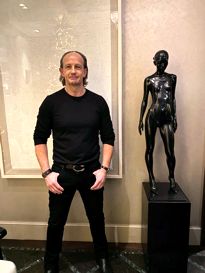

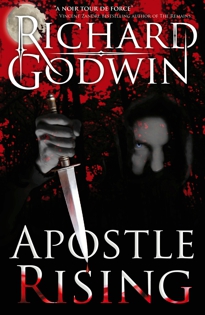
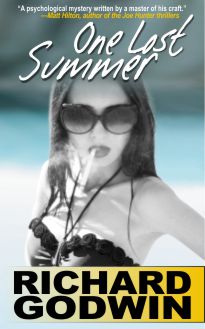
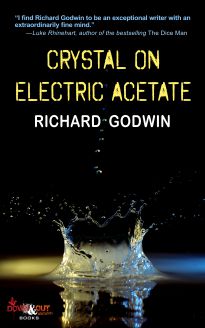
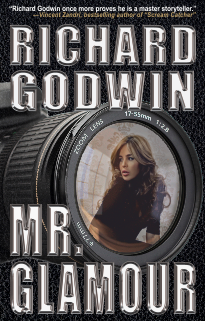
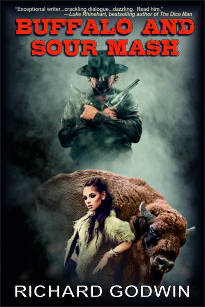
5 Responses to Chin Wag At The Slaughterhouse: Interview With Lou Boxer